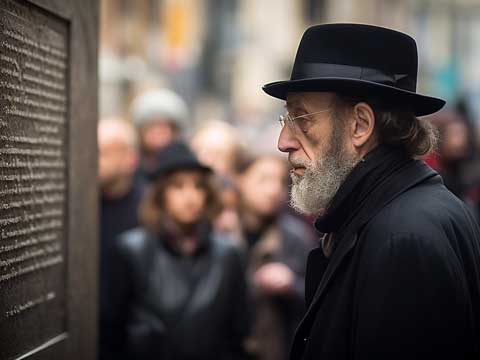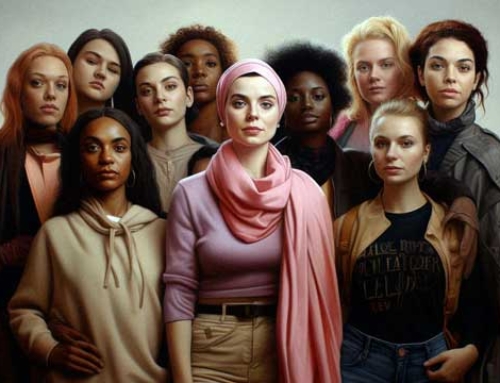Imagine a world where the unthinkable becomes reality. This is exactly what Elie Wiesel presents to us in the first chapters of his gripping book “Night”. Today, we delve into this dark period and draw parallels with our contemporary world. For, as distant as the lessons may seem, they are still of immeasurable value.
Missed our first article about Elie Wiesel’s “Night”? Read it here.
Warnings, ghettos, and deportation: A world changing
“Night” begins with a community facing increasing restrictions and warnings. Wiesel describes how his life and that of his community are slowly but surely curtailed.
Take, for example, the moment when Jews are no longer allowed to own valuable possessions and are forced to wear a yellow star. These measures, which could initially be downplayed (after all, it was a tumultuous time of war), were the first steps towards dehumanization. The ghettos, a harbinger of what was to come, mark the beginning of an unimaginable nightmare.
Wiesel aptly describes the prevailing feeling: “The yellow star? Oh, that’s not so bad… You don’t wear it on your heart.”
These early stages of the Holocaust show how quickly a society can change, how quickly freedoms can be restricted, and how easily people can be reduced to nothing more than a number.
Wiesel’s thoughts and feelings: between hope and despair
Elie Wiesel takes us into his inner struggle, a battle that takes place in a world increasingly alienated from humanity. He describes his feelings of disbelief and fear, but also moments of hope. For instance, in a scene where he and his father survive the selection, Wiesel feels a mix of relief and disbelief. He writes: “I had become the child of death, and death decided to spare me a little longer.” This shows his constant balancing on the brink of despair and the will to survive.
His story is a powerful reminder of human resilience, even in the darkest times. Wiesel’s ability to maintain a glimmer of hope in the face of unimaginable cruelty and loss is both inspiring and heart-wrenching.
Modern parallels: discrimination and prejudices today
It’s tempting to think that the horrors Wiesel describes belong to the past. However, the harsh reality is that discrimination and prejudices are still deeply rooted in our contemporary society. Take, for example, the rise in hate crimes against certain ethnic groups, or the subtle but persistent forms of discrimination in the workplace and education. These contemporary examples show that the mechanisms of exclusion and hate, so evident in the early stages of the Holocaust, still exist in our modern society.
The history of the Holocaust teaches us how dangerous it is to look away, to underestimate the seriousness of the situation. Wiesel’s experiences in “Night” are a powerful reminder of the consequences of passivity and denial. It’s a lesson in vigilance and action. We must remain alert to signs of discrimination and prejudice, and actively work towards a society where everyone is treated equally. This requires not just awareness, but also concrete actions to fight injustice, both individually and collectively.
Recognizing the early signs of systematic oppression
What can today’s youth learn from this? It’s important to be alert to signs of injustice and oppression in one’s own environment. It’s not just about grand gestures, but also about the small signals that indicate a shift in our society. It’s everyone’s responsibility to stand up against injustice, in whatever form it takes.
“Night” is not just a story about the past. It’s a warning, a lesson, a call to action. Let’s have the courage to listen and learn from history, so that the darkness of the past never returns.
In our next blog post, we will delve deeper into life in Auschwitz, as described by Wiesel. We hope you continue to follow us on this journey through history, a journey that concerns us all.






